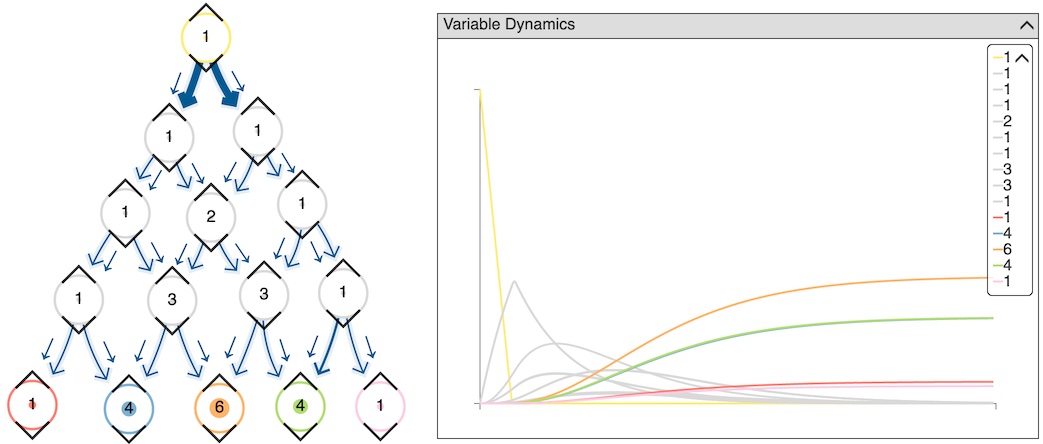
Consider a simplified pachinko-like pinball machine: drop a ball at the top of the pyramid, and give it a 50-50 chance of ricocheting left or right as it descends. By the time it gets to the bottom it likely will be somewhere near the middle – but not always. This LOOPY model simulates the situation. As the lines on the "Variable Dynamics" graph show, probability starts out concentrated in the center and diffuses outward to form a Pascal's Triangle shape, 1-4-6-4-1 in the case of four layers. In probability that's called a Binomial Distribution and describes how to combine independent identical choices, like tossing four coins. If you flip them 16 times, on the average you'll get all heads once, three heads plus a tail four times, two heads and two tails six times, etc. 1-4-6-4-1!
(LOOPY is an ultralight tool for systems thinking ©2021 MITRE Corporation; cf Human Diffusion (2000-01-19), Combinatorial Interference (2003-09-10), Normal Distribution (2008-04-26), ...) - ^z - 2021-09-01